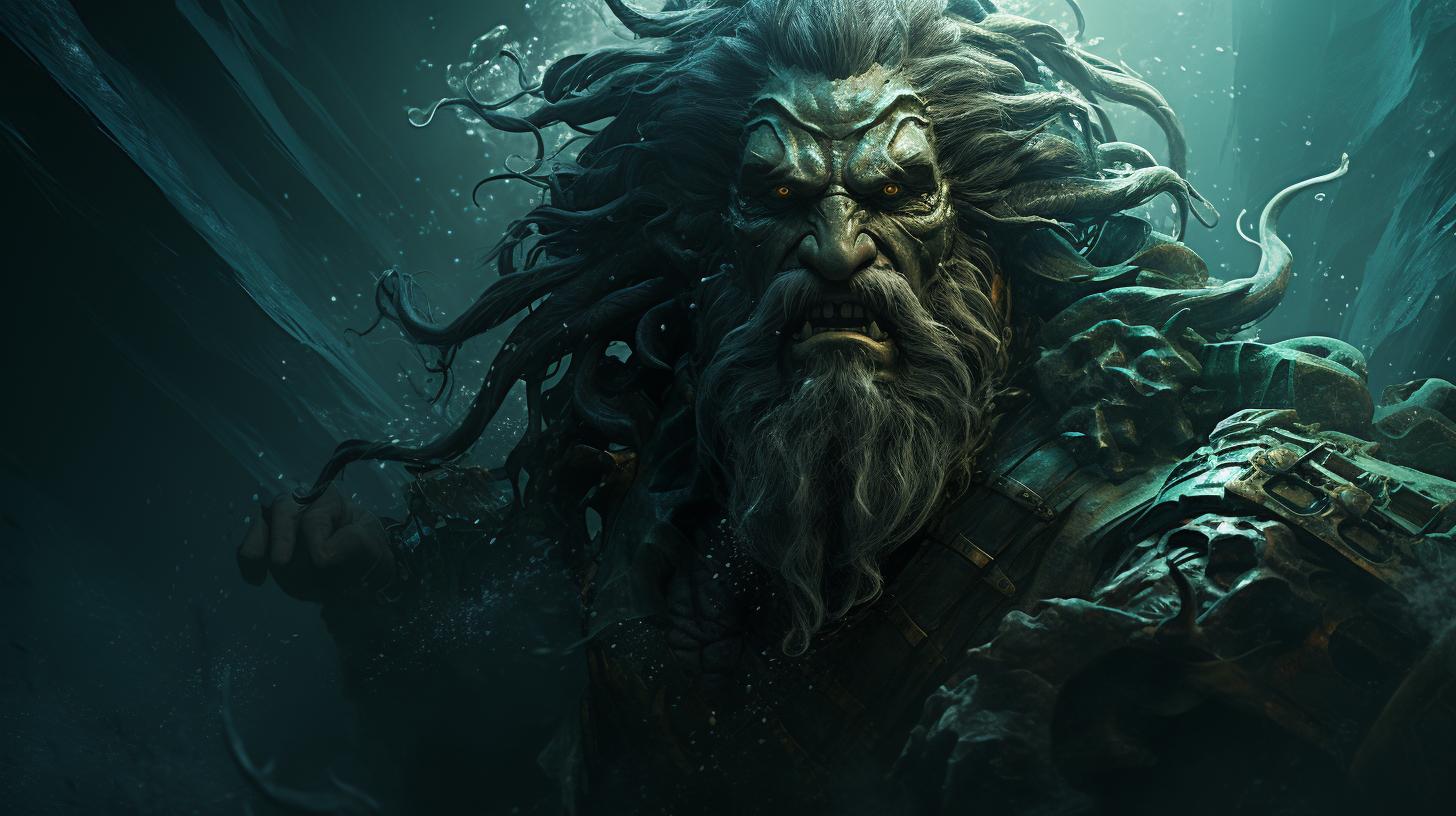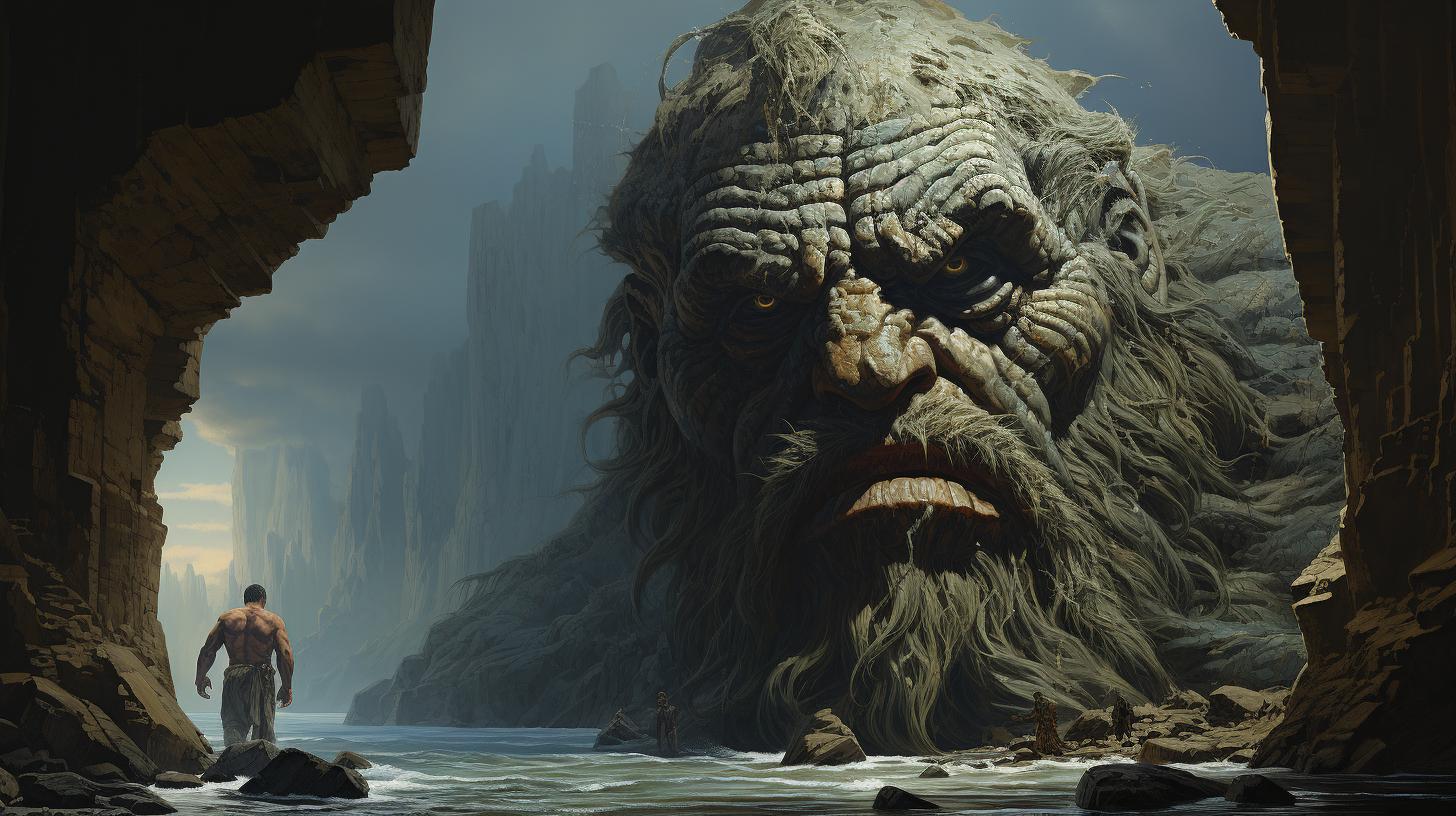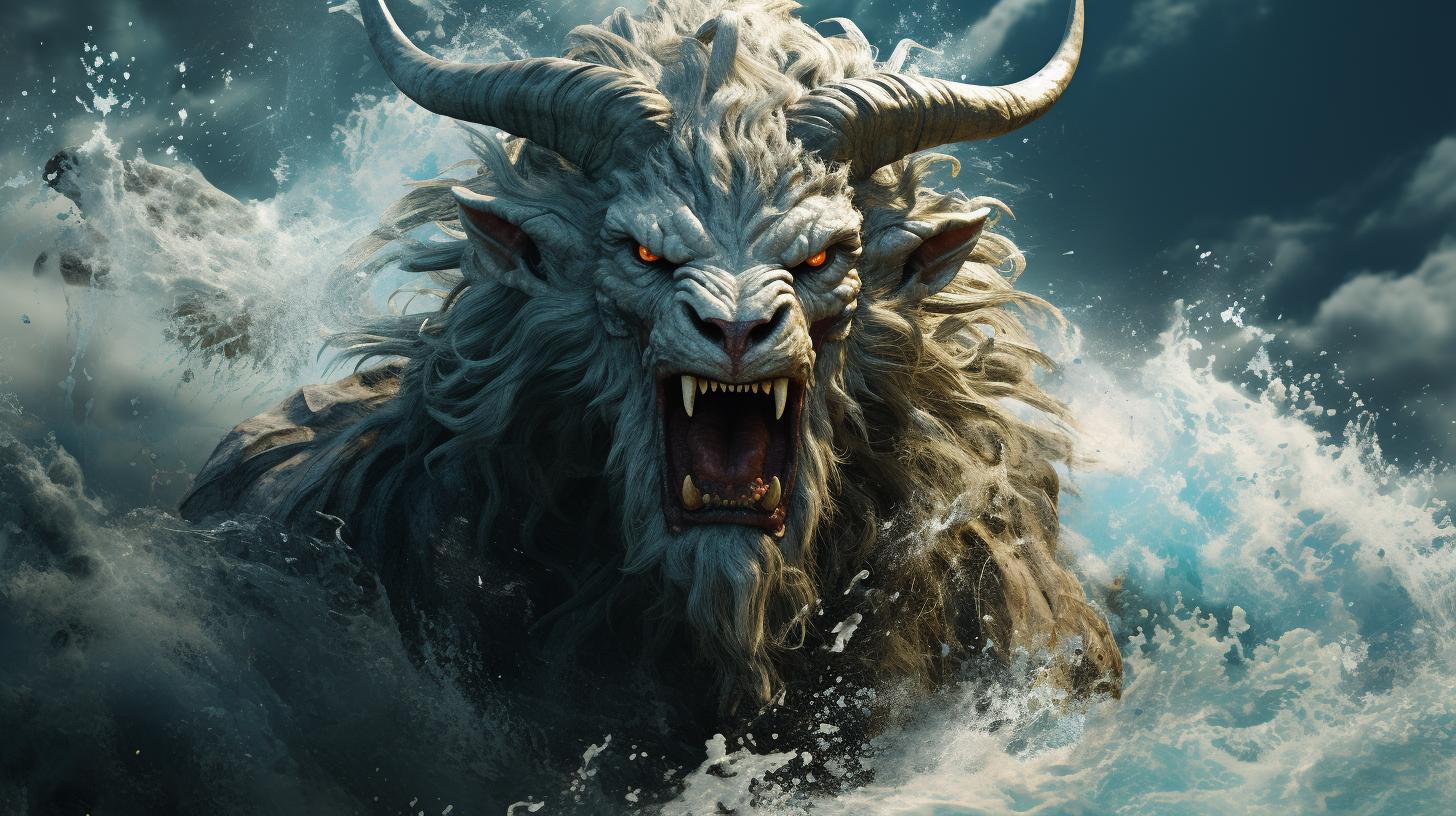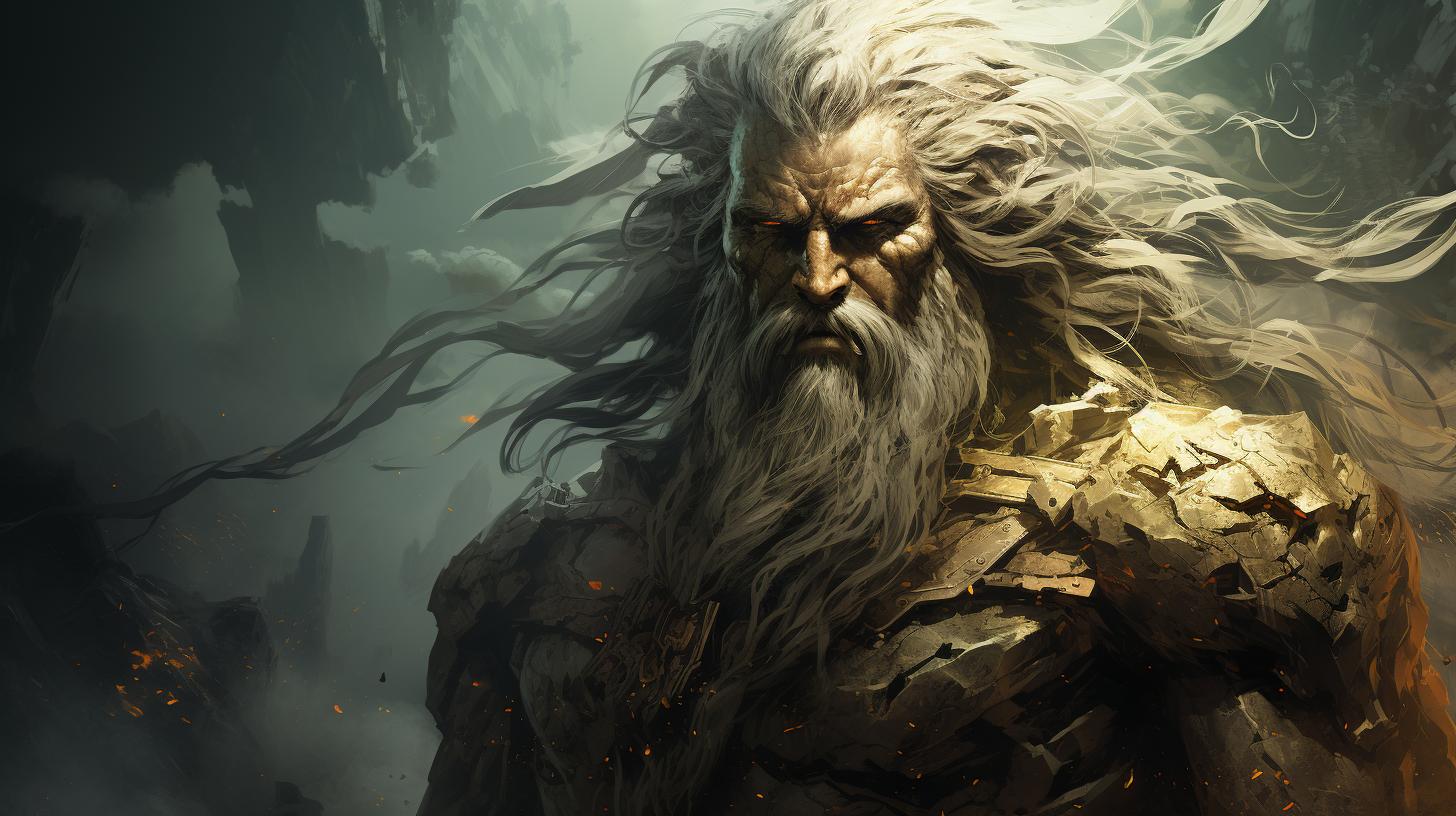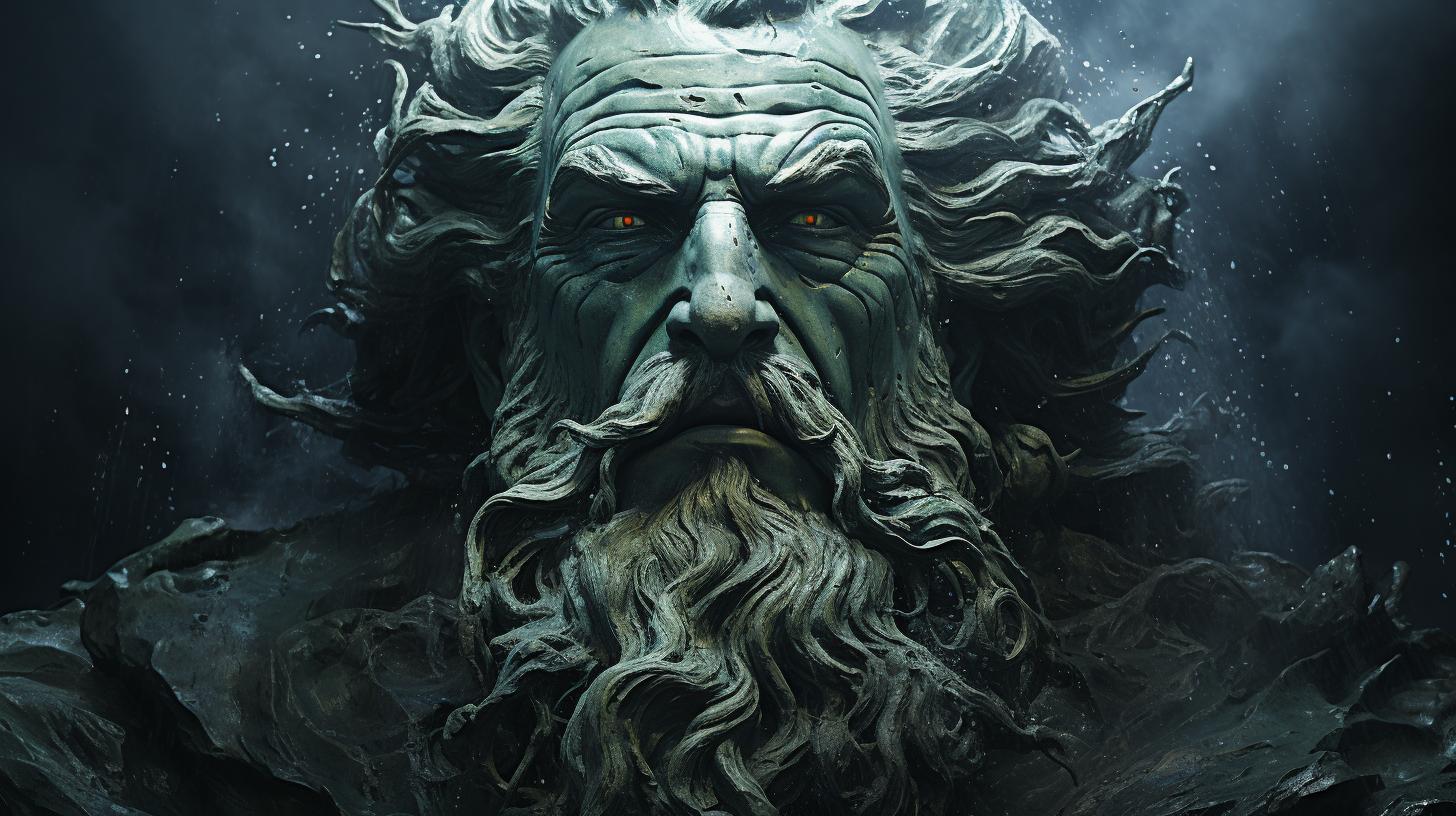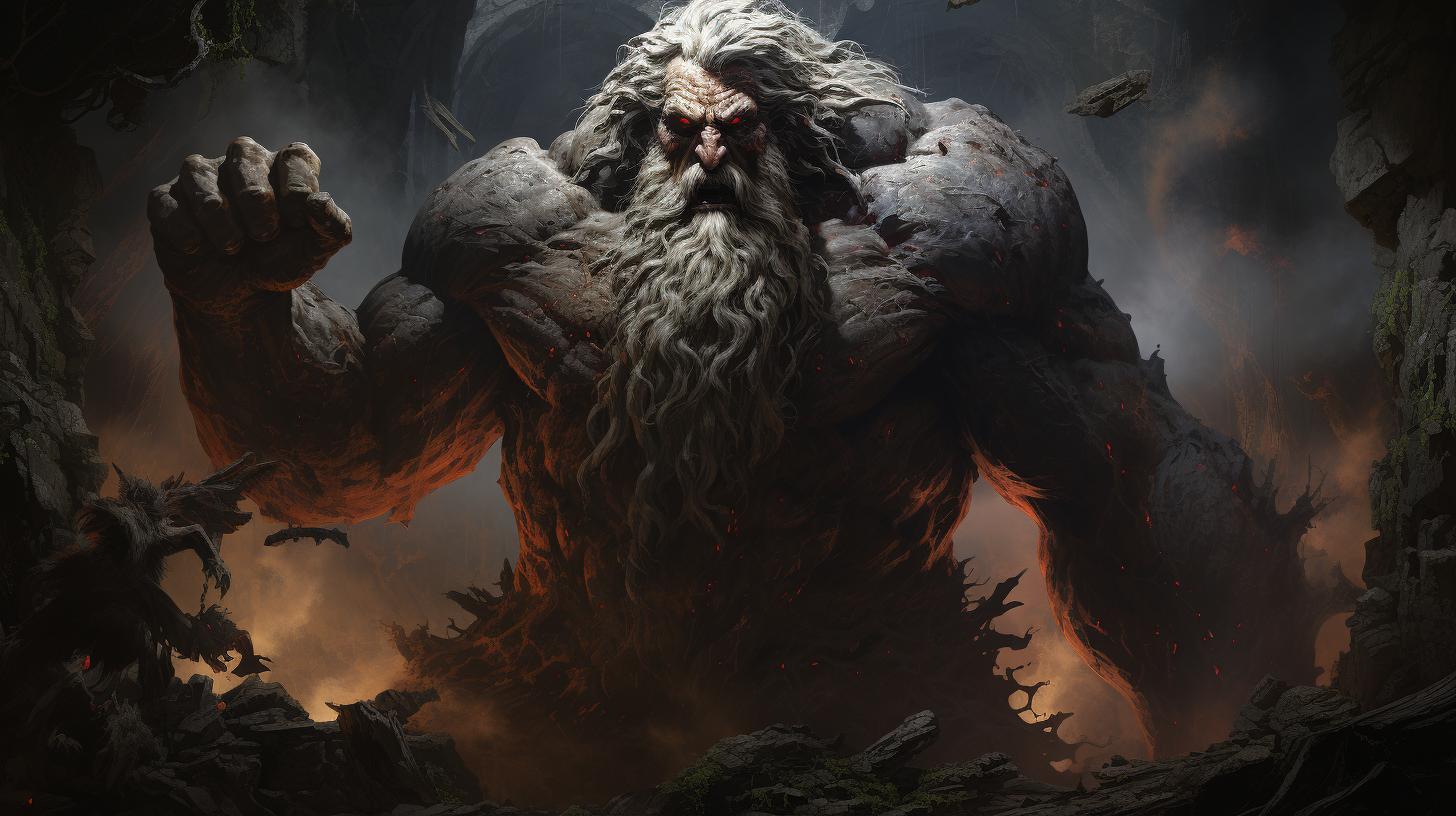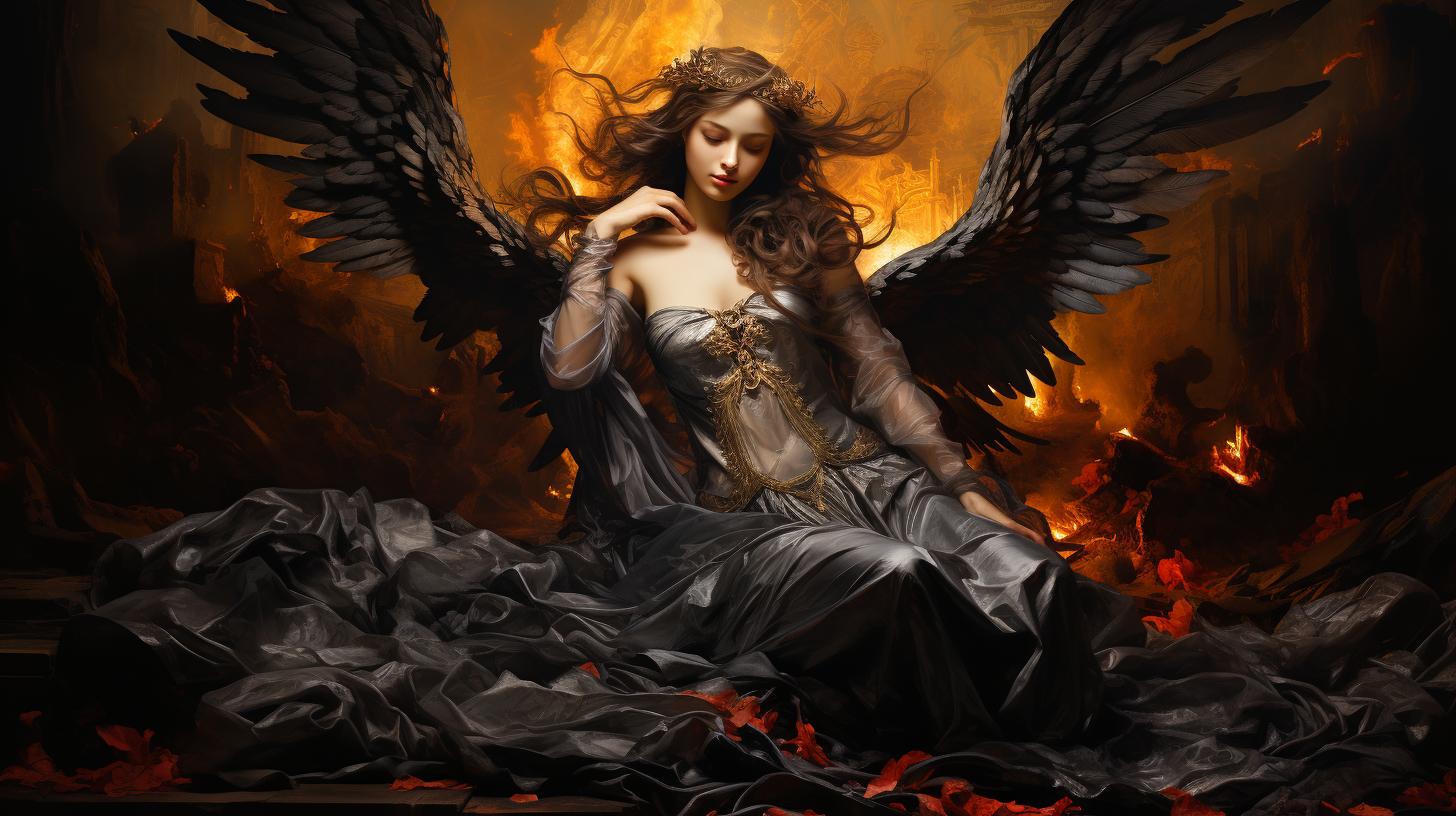Unveiling the Mysteries: Phorcys in Greek Mythology
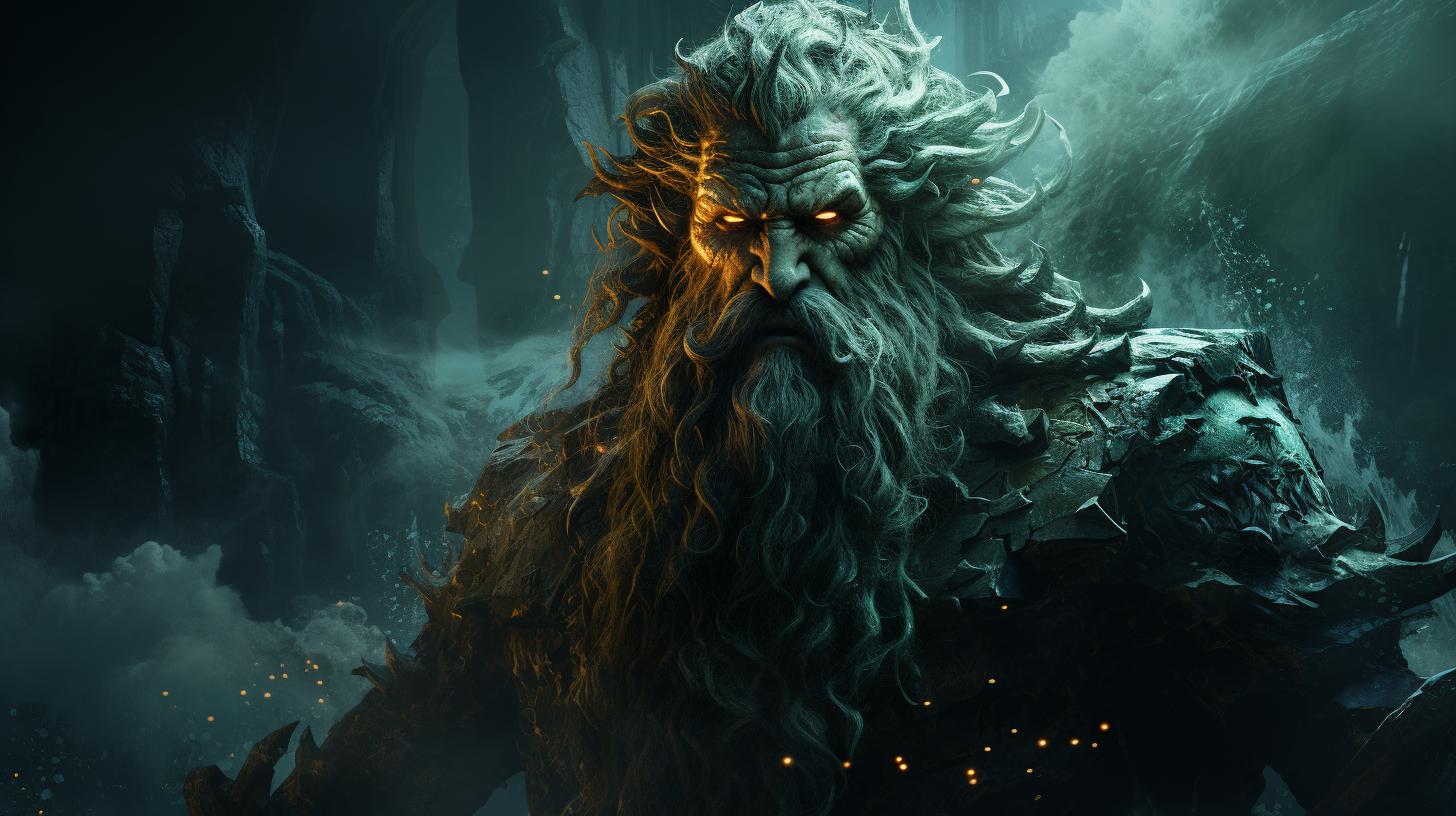
Phorcys, a prominent figure in Greek mythology, is associated with the enigmatic mysteries of the sea. In Greek mythology, Phorcys is known as the god of hidden perils and is often linked with various deities and creatures such as Echidna, the Gorgons, and the Graeae.
Represented as a grey-haired triton or a youthful figure with crab-like attributes, Phorcys is believed to have played a significant role in the tangled web of ancient Greek myths. This article explores Phorcys’ origins, relationships, mythical creatures, symbolism, and cultural significance within Greek mythology.
The Origins of Phorcys and his Role within Greek Mythology
In Greek mythology, Phorcys is a significant deity associated with the mysteries of the sea. He is known for his intriguing origins and his important role in the pantheon of Greek gods.
Phorcys is often depicted as a triton with grey hair or a youthful figure sporting crab-like features.
The lineage of Phorcys can be traced back to Gaia, the ancestral mother of all life and personification of the Earth in Greek mythology.
Gaia gave birth to many powerful beings, including Phorcys and his siblings. Phorcys’ parents also include Pontus, the god of the sea. This divine heritage connects him closely to the primordial forces of nature.
Phorcys’ role within Greek mythology is significant, as he represents the hidden dangers and mysteries of the vast ocean. With his wife and sister Ceto, Phorcys parented several terrifying creatures and deities.
These offspring include fearsome creatures like the Echidna, a monstrous being depicted as half-woman and half-snake.
Phorcys’ associations are not limited to Echidna alone. He is also related to other notable creatures such as the Gorgons and the Graeae.
These fascinating connections demonstrate Phorcys’ important place in Greek mythology and the powerful impact he had on the ancient world’s imagination.
Phorcys’ Relationship with Gaia and Ceto
In Greek mythology, Phorcys, the god of the sea, is closely connected to both Gaia and Ceto, two powerful figures in ancient Greek cosmology.
Gaia, known as the mother of all life and the personification of the Earth, plays a significant role in Phorcys’ lineage.
She is not only Phorcys’ sister but also his mother, as they both share the same parentage. Gaia, being the ancestral mother of all forms of life, gave birth to various powerful deities, including Urano, the personification of the sky and the father of Phorcys.
Ceto, on the other hand, is Phorcys’ sister and wife. Together, they bring forth several formidable offspring, adding to the complexity of their relationships within the Greek pantheon. Some of their notable children include Ladon and Thoosa, among others, who possess extraordinary characteristics and play significant roles in Greek mythology.
The intertwining relationships between Phorcys, Gaia, and Ceto highlight the intricate connections within the ancient Greek pantheon and the multifaceted nature of mythology.
The Mythological Creatures Associated with Phorcys
Phorcys, the god of the sea in Greek mythology, is closely associated with various mythical creatures that inhabit the depths of the ocean.
These creatures, born from Phorcys and his wife Ceto, embody the dangers and mysteries of the underwater realm. Let us explore some of the notable creatures connected to Phorcys:
- Scylla: One of the most famous creatures linked to Phorcys is Scylla, a sea monster with multiple heads and a ring of fierce dog-like heads encircling her waist.
Scylla lurked in a narrow strait, terrorizing sailors and ships that passed by.
- Charybdis: Another formidable creature associated with Phorcys is Charybdis, a massive whirlpool that could swallow entire ships. Often depicted as a female monster, Charybdis was known for causing treacherous currents and dangerous whirlpools.
- Graeae: Phorcys is also connected to the Graeae, three sisters who shared one eye and one tooth among them. These old hags had grey hair and deformed bodies, possessing a deep knowledge of the secrets and prophecies of the sea.
- Gorgons: Phorcys is the grandfather of the Gorgons, terrifying creatures with snakes for hair and the ability to turn anyone who looked at them into stone.
Medusa, the most famous of the Gorgons, was said to be the offspring of Phorcys and Ceto.
- Ichthyocentaurs: These creatures had the upper body of a human combined with the lower body of a fish. Often depicted as benevolent sea deities, the Ichthyocentaurs were loyal servants of the sea god Poseidon.
These mythological creatures associated with Phorcys serve as reminders of the dangerous and enigmatic nature of the ocean. They symbolize the power, unpredictability, and vastness of the sea, captivating the imagination of ancient Greeks and inspiring awe and fear.
Phorcys and Echidna: The Parents of Monstrous Offspring
In Greek mythology, Phorcys and Echidna are renowned as the parents of a multitude of fearsome and monstrous creatures. Their union gave birth to a diverse array of beings, which played significant roles in various mythological tales.
One of their notorious offspring is the fearsome Chimera, a creature with the body of a lion, the head of a goat, and a serpent for a tail. This monstrous hybrid struck terror into the hearts of many, as its flames could not be extinguished by any earthly force.
Another notable offspring of Phorcys and Echidna is the ferocious Hydra. This serpentine beast possessed multiple heads, which regenerated when severed, making it an extremely formidable opponent. Its defeat required the ingenuity of the hero Heracles.
The Nemean Lion, a colossal and impervious creature, also descended from Phorcys and Echidna.
Its impenetrable hide rendered conventional weapons useless, and it took the legendary strength of Heracles to slay this fearsome beast.
Moreover, the terrible Sphinx, a creature with the body of a lion and the head of a human, can trace its lineage back to Phorcys and Echidna.
This enigmatic being presented riddles to passersby, and those who failed to solve them were met with a gruesome fate.
Phorcys and Echidna’s monstrous offspring were formidable adversaries and provided heroic figures in Greek mythology with incredible challenges and quests.
Their legends continue to captivate and fascinate audiences, serving as a testament to the imaginative power of ancient Greek mythology.
Phorcys’ Connection to the Gorgons and Graeae
Phorcys, the formidable god of the sea, is intricately linked to the terrifying Gorgons and enigmatic Graeae in Greek mythology. These fascinating mythological creatures hold a significant place in the tales and legends surrounding Phorcys.
The Gorgons: Medusa and her Sisters
- Medusa, the most infamous of the Gorgons, was born from the union of Phorcys and his wife, Ceto.
- With her serpent-like hair and the power to turn anyone who gazes into her eyes into stone, Medusa struck fear into the hearts of mortals and even gods.
- Her sisters, Stheno and Euryale, were also Gorgons, possessing similarly terrifying features.
- Together, these three sisters represented the fearsome aspect of Phorcys, embodying the dangerous and uncanny nature of the sea.
The Graeae: Guardians of Knowledge
- The Graeae, named Deino, Enyo, and Pemphredo, were three ancient sisters who shared one eye and one tooth among them.
- These mysterious beings were born from Phorcys and Ceto, and their appearance was as strange as their existence.
- The Graeae were the guardians of secret and forbidden knowledge, possessing great wisdom and foresight.
- As the sisters of Phorcys, they shared his enigmatic nature, with their combined wisdom and ancient power contributing to the intricate tapestry of Greek mythology.
The connection between Phorcys and these mythical creatures symbolizes the intertwining of different aspects of the sea.
While the Gorgons embody the fearsome and dangerous side, the Graeae represent the hidden knowledge and ancient wisdom associated with the depths of the ocean.
Phorcys’ Appearance and Symbolism in Greek Mythology
In Greek mythology, Phorcys was often depicted as a striking figure embodying the enigmatic nature of the sea.
His appearance varied between different accounts and artistic representations.
Phorcys was commonly depicted as a triton, a creature with the upper body of a human and the lower body of a fish.
He was usually depicted with grey or blue-green skin and a muscular physique. His hair was often depicted as flowing and grey, resembling seaweed or the foaming waves of the ocean.
In some depictions, Phorcys was portrayed as a younger figure, characterized by his crab-like attributes. He was shown with crab claws in place of hands or crab legs in place of feet.
This representation emphasized his association with hidden dangers and mysteries lurking beneath the surface of the sea.
Symbolically, Phorcys represented the untamed and unpredictable aspects of the ocean. The sea was viewed as vast and chaotic, capable of sudden storms and treacherous undercurrents.
Phorcys embodied these aspects, serving as a reminder of the dangers that sailors and seafarers faced. His presence symbolized the need for caution and respect when navigating the vast waters.
Furthermore, Phorcys represented the mysteries of the deep sea, which remained largely unexplored and unknown to the ancient Greeks.
The depths of the ocean were seen as a realm of hidden creatures and mythical beings, with Phorcys serving as a guardian of this underwater realm.
Phorcys’ appearance and symbolism in Greek mythology reflected the reverence and fear that the ancient Greeks held for the vastness and power of the sea.
Through his depiction as a triton or a figure with crab-like attributes, Phorcys personified the mysteries and dangers that lay beneath the waves.
Tales and Stories Involving Phorcys in Greek Mythology
Phorcys, the enigmatic god of the sea in Greek mythology, is woven into numerous captivating tales and stories that showcase his profound influence and connections within the mythological world.
These narratives provide insights into his role as a powerful deity, as well as shed light on his relationships with other mythological figures.
Phorcys and the Origins of the Kraken
One intriguing story involving Phorcys tells of his association with the monstrous sea creature known as the Kraken.
According to the tales, Phorcys was said to be the father of this legendary creature, which would wreak havoc on ships and sailors, emerging from the depths with immense power.
The Quest for Phorcys’ Enchanted Trident
Another captivating tale chronicles the heroic adventures undertaken by a brave warrior to claim Phorcys’ enchanted trident.
Legends speak of the trident’s ability to command the sea and control the tides. Many heroes sought this powerful weapon, navigating treacherous waters and facing mythical beasts in their quest.
Phorcys’ Alliance with Poseidon
In various myths, Phorcys forms a formidable alliance with the mighty god of the sea, Poseidon. Together, they join forces to protect the vast oceans and establish their dominion over the marine realm.
Their collaboration unleashes powerful storms, calming seas, and granting favor to sailors who honor them.
Phorcys’ Role in the Battle of the Sea Gods
One legendary story recounts the epic battle between Phorcys and other sea gods against formidable opponents. These tales depict Phorcys as a warrior who defends the deep sea against monstrous forces, bravely leading his fellow deities in a clash of immense power and intrepid heroism.
Phorcys’ Influence on Mariners and Seafaring Culture
Throughout history, Phorcys has been revered as a patron god of mariners, offering blessings of safe passage and bountiful catches. Sailors and seafaring communities often prayed to him, seeking protection from storms, guidance in navigation, and abundance from the vast depths of the sea.
These tales and stories surrounding Phorcys in Greek mythology provide a captivating glimpse into his multifaceted character, showcasing his power, alliances, and impact on the world of the seas. From fearsome creatures to epic battles, the narratives surrounding Phorcys continue to capture the imagination and fascination of those who delve into the depths of Greek mythology.
Phorcys’ Significance in Ancient Greek Religion and Culture
Phorcys, a deity of the sea in Greek mythology, held great significance in the religious and cultural beliefs of ancient Greece. Worshipped as a powerful and mysterious figure, Phorcys played an integral role in shaping the perceptions and practices of the ancient Greeks.
Symbol of Hidden Dangers and Mysteries
Phorcys represented the hidden dangers and unpredictability of the sea, making him an important symbol in the maritime culture of ancient Greece. Sailors and fishermen regarded Phorcys as both a protector and a source of fear, seeking his favor and appeasing him through offerings and rituals.
Connection to Divine Lineage
As the son of Gaia and Pontus, Phorcys had a direct link to the primordial forces of the Earth and sea. His divine lineage elevated his status within Greek mythology and emphasized his role as a bridge between the terrestrial and aquatic realms.
Associated with Divine Offspring
Phorcys’ marriage to Ceto, his sister, resulted in the birth of several formidable and terrifying offspring. These include the fearsome sea monsters such as the Gorgons, the Graeae, and many other mythical creatures that both fascinated and frightened the ancient Greeks.
Influence on Mythological Narratives
Phorcys’ presence in various mythological narratives highlighted his significance in ancient Greek religion and culture. His involvement in the stories of heroes and gods shaped the beliefs and moral lessons conveyed through these tales, adding depth and complexity to the mythology of the sea.
Cultural Depictions and Reverence
Depictions of Phorcys in art and literature showcased his distinctive physical attributes and role as a sea deity. The ancient Greeks often depicted him as a triton with gray hair or a youthful figure with crab-like features.
These representations served to evoke reverence and capture the essence of Phorcys’ power and enigmatic nature.
Overall, Phorcys’ significance in ancient Greek religion and culture cannot be overstated. As a deity associated with the mysteries of the sea, his influence permeated the maritime traditions, narratives, and artistic expressions of the ancient Greeks, leaving an enduring legacy in Greek mythology.
Phorcys in Greek Mythology Today: Popular Depictions and References
In modern times, the captivating tales of Phorcys from Greek mythology continue to inspire and intrigue people around the world. Popular culture often depicts Phorcys in various forms, showcasing his association with the mysteries of the ocean and his connection to other mythical creatures.
1. Art and Literature: Phorcys’ distinctive appearance, with his grey-haired triton form or as a younger figure with crab-like characteristics, has been depicted in numerous works of art and literature. Artists and authors often draw inspiration from Greek mythology to create captivating visuals and narratives that portray Phorcys’ enigmatic presence.
2. Mythological References: Phorcys’ influence can be seen in modern mythological references and adaptations. From books to movies and television shows, his name and symbolism are frequently referenced to add depth and intrigue to mythical stories or to portray the dangers concealed within the vastness of the sea.
3. Symbolism in Pop Culture: Phorcys’ association with the mysteries of the ocean has extended to various areas of popular culture. His representation often symbolizes the hidden perils or unknown aspects of life, reminding individuals of the unpredictable nature of the world around them.
4. Popular Characters Derived from Phorcys: Certain fictional characters in contemporary storytelling have been inspired by Phorcys’ lineage or characteristics. These characters often embody the essence of the sea and its mysteries, further emphasizing the lasting impact of Phorcys’ presence in Greek mythology.
Overall, Phorcys remains an integral part of Greek mythology’s enduring legacy and continues to captivate modern audiences through various forms of artistic expression and mythological adaptations.
.

